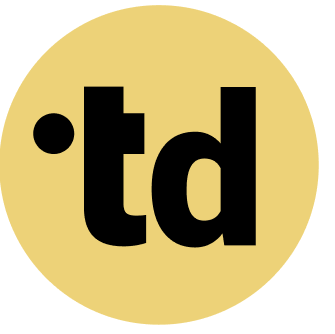Key Takeaways
Governing AI agents is a legal necessity under the new EU AI Act, which classifies workplace AI as a high-risk application requiring human oversight.
A clear framework for AI agent integration involves mapping tasks, defining roles, and establishing transparent performance metrics for both humans and bots.
Successful hybrid teams measure success beyond productivity, tracking metrics like employee satisfaction, trust, and time freed up for creative work.
More than 40 percent of German companies are now integrating AI into their processes. This rapid adoption brings incredible opportunities for organizational development but also significant risks. Unmanaged AI agents create confusion, duplicate work, and expose companies to new compliance challenges under the EU AI Act. For Team Architects, the mission is clear: establish robust AI agent integration strategies. This playbook provides the structure to govern your new digital colleagues, turning potential disruption into a competitive advantage and ensuring your hybrid team is built for the future.
Practical Framework for Team Architects
As a Team Architect, you can apply these principles to your organization:
- Map Current State: Document existing roles and responsibilities using a tool like teamdecoder.
- Identify Gaps: Where are roles unclear? Where do humans and AI agents overlap?
- Define Clear Boundaries: Specify which tasks are handled by humans vs. AI agents.
- Create Accountability: Assign clear decision rights for each role.
- Iterate and Improve: Continuously refine based on team feedback.
The New Bot on the Block: Navigating AI Adoption
AI adoption in Germany has surged, with a significant number of companies now using intelligent systems. This growth is not uniform; a significant number of large companies have adopted AI, compared to just a significant number of of microenterprises. This creates a complex landscape for transformation leads managing diverse team structures. Many overlook the 20 percent of initiatives that fail due to poor integration. The result is often a disjointed hybrid team where human and AI roles blur, reducing efficiency by up to ten percent. This initial chaos sets the stage for a more structured approach.
Sweet Teams Are Made of This: The Mandate for AI Governance
The European Union's AI Act is no longer a future concept; it entered into force on 1 August 2024. It classifies AI in the workplace as a high-risk area, demanding strict compliance from 100 percent of employers. Non-compliance carries fines up to 35 million euros or seven percent of global turnover. This regulation requires total transparency and human oversight in algorithmic management. A clear governance framework is not just good practice; it is a legal necessity for managing AI ethics. Without it, defining accountability becomes nearly impossible.
Architect Insight: A Framework for Human-AI Collaboration
To effectively govern AI agents, Team Architects need a repeatable toolkit. A staggering most German companies see AI as critical to success, yet few have a clear plan. Building a successful hybrid team requires defining every role with precision. Our Playful Tip: Think of it as choreographing a dance between human creativity and machine efficiency. Here is a checklist to guide your organizational development:
- Map all key team tasks and assign optimal autonomy levels for AI.
- Define at least three clear escalation paths for AI-flagged issues.
- Establish five transparent performance metrics for both human and AI contributions.
- Schedule bi-weekly reviews of workflows for the first 90 days.
- Provide 15 hours of initial training on new human-AI interaction protocols.
- Appoint one human owner for every three AI agents to ensure accountability.
Deep Dive: This structured approach builds trust, which is earned through reliability and explainability. It clarifies roles and responsibilities from day one, preventing the common pitfalls of AI integration.
Make Bots and Humans Click: Defining Roles with teamdecoder
Clear roles are the bedrock of high-performing teams, reducing conflict by over a significant portion. When AI agents join, that clarity is even more essential. An estimated a portion of daily work decisions will soon be automated, making ambiguity a significant risk. Use teamdecoder to visually map out who does what, creating a single source of truth for your entire hybrid team. You can define an AI agent's responsibilities in under ten minutes. Our platform helps you design workflows where tasks are handed off seamlessly between people and bots. You can try teamdecoder for free to see how it works. This clarity is fundamental to managing all roles in one place.
Teams Just Wanna Have Fun: Measuring Success and Well-Being
Effective AI governance boosts more than just the bottom line. Teams with clear roles report some higher job satisfaction. AI-powered tools can now analyze team sentiment, helping leaders proactively address engagement issues. Success metrics should extend beyond task completion rates, which can see a a portion of uplift.Our Playful Tip: Track your team's learning rate and trust index over the first six months. Here are four key performance indicators for your new hybrid team:
- A a portion of reduction in resolution time for customer queries.
- A ten percent increase in creative task output from human team members
- A a significant number of decrease in time spent on repetitive administrative tasks..
- A five percent improvement in employee engagement scores each quarter.
Focusing on these numbers ensures your strategy operationalization is human-centric. This prepares you for planning future handoffs and scaling success.
Scaling Your Hybrid Team with Confidence
Once you have a governance model, scaling becomes a strategic advantage. Only a portion of companies successfully scale AI beyond pilot projects due to complexity. With a tool like teamdecoder, you can replicate clear role structures across dozens of teams instantly. This supports sustainable growth and avoids the common trap of creating information silos. Teams using a visual platform for roles are a significant number of faster at onboarding new members, human or AI. This structured approach to scaling is key to long-term success in change management. Now, you are ready to make change feel like play. See our pricing.
More Links
Germany's AI Strategy provides official information on Germany's national AI strategy.
Federal Ministry for Economic Affairs and Energy offers insights into artificial intelligence and its role in technology and the German economy.
German Federal Government details the latest information regarding the AI Act.
Federal Ministry of Labour and Social Affairs presents guidelines for the application of AI in labor and social administration.
Munich Chamber of Industry and Commerce offers information and guidance on the implications of the AI Act for businesses.
Federal Institute for Occupational Safety and Health (BAuA) provides publications and resources on artificial intelligence in the context of work design and digitalization.
FAQ
How can teamdecoder help with AI agent integration?
teamdecoder provides a visual platform to clearly define and map the roles and responsibilities of every team member, including AI agents. This creates a single source of truth that clarifies workflows, improves accountability, and helps you build and scale effective hybrid teams in minutes.
Is this approach compliant with the EU AI Act?
Yes, our framework is designed to help you meet the core requirements of the EU AI Act, such as ensuring human oversight, transparency, and clear accountability for AI systems used in the workplace. By defining roles and owners, you create the necessary structure for compliance.
What kind of teams can benefit from this AI governance model?
Any team that uses or plans to use AI agents can benefit. This includes internal enablers in HR, modern leaders managing departmental transformation, external consultants designing new team structures, and startups looking to scale their roles from day one.
How long does it take to set up AI governance with teamdecoder?
You can start defining roles for your human-AI team in under an hour. The platform is designed for speed and clarity, allowing you to quickly establish a governance framework and adapt it as your team evolves. Try teamdecoder for free - shape your team and make change feel like play!





